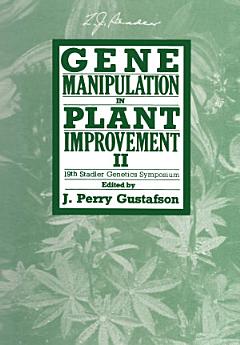Gene Manipulation in Plant Improvement II: 19th Stadler Genetics Symposium
J. Perry Gustafson
Dec 2012 · Springer Science & Business Media
Ebook
438
Pages
reportRatings and reviews aren’t verified Learn More
About this ebook
There are clearly many directions in which the further development of the GUS gene fusion system can progress. Some of these have been outlined above, but others can be imagined. There are no reasons to limit our conceptions of the use of GUS gene fusions to analysis and manipulation of single genes. We can envision numerous marked genes - perhaps with several new fusion systems - giving valuable information about gene interaction, or population structure. The study of plan- pathogen and plant symbiont interactions can progress rapidly with simple quantitative markers for genes and individuals. We can imagine ways of using gene fusions to report on crop physiology or other complex phenotypes, thereby enhancing the accuracy and speed of screening. Introduction of the biosynthetic pathway for glucuronide detoxification by expressing genes for the UDP-glucuronyl transferases in plants may result in novel mechanisms for plants to deal with xenobiotics such as insecticides or herbicides. Synthesis of substrates, which until now has been performed chemicall- resulting in expensive compounds - can be done biosynthetically. This should make the system not only the most powerful gene fusion system for agriculture, but also the most accessible.
Rate this ebook
Tell us what you think.
Reading information
Smartphones and tablets
Install the Google Play Books app for Android and iPad/iPhone. It syncs automatically with your account and allows you to read online or offline wherever you are.
Laptops and computers
You can listen to audiobooks purchased on Google Play using your computer's web browser.
eReaders and other devices
To read on e-ink devices like Kobo eReaders, you'll need to download a file and transfer it to your device. Follow the detailed Help Center instructions to transfer the files to supported eReaders.






